Equestrian center in Sânsimion, Sânsimion, Harghita county, RO
An exercise in landscape transparency, by which a relatively large volume gets acquainted with the scale of the place, more precisely with the cultural landscape in Transylvania’s Szekler Region. The St. Francis Foundation is concerned with caring for and educating orphans or impoverished children. One of the goals of the Foundation is to provide the opportunity to these children to learn a trade that they can use to make a living once they leave the homes. Given the community character of the project, the budget was a modest one, which had implications on the solution, as well as the fees— the design work being partly pro bono. The standard solution for such a building in today's Romania would have been a sheet metal industrial building. However, it seemed essential to us that we use wood—the traditional material of the place, not only for the sake of integration with the local spirit, but also as a local resource; a resource not only in the sense of material, but of techniques, knowledge and community values. For the above reasons, we opted for an intermediary solution: neither industrial high-tech (which was inaccessible budget-wise, and in any aspect, it would have eliminated the connection with the place), nor a traditional interpretation (which was virtually impossible, given the openness of the space). The structural solution is an example of “architectural engineering”; it is precise and calculated. However, instead of using glued laminated wood or similar solutions, relatively thin boards of hardwood were screwed together to form elements with a wider section and then - as in the case of trusses - more complex structures. “Modern” design is materialised through intermediary techniques, somewhere between craft and industrial production. Closures are only there to protect the interior from the elements. They come as a skin made of thin wooden profiles, mounted in the easiest possible way, and having varying degrees of transparency. The stables are created in a way that, when the budget allows it, they may be extended by an identical module, to allow the organisation of national and international equestrian events. We believe that the combination of archetypal form, regional materials and the flexibility of the openings due to the building system, will allow real adequacy—both to the situation of each place as to the specificity of each cultural space.
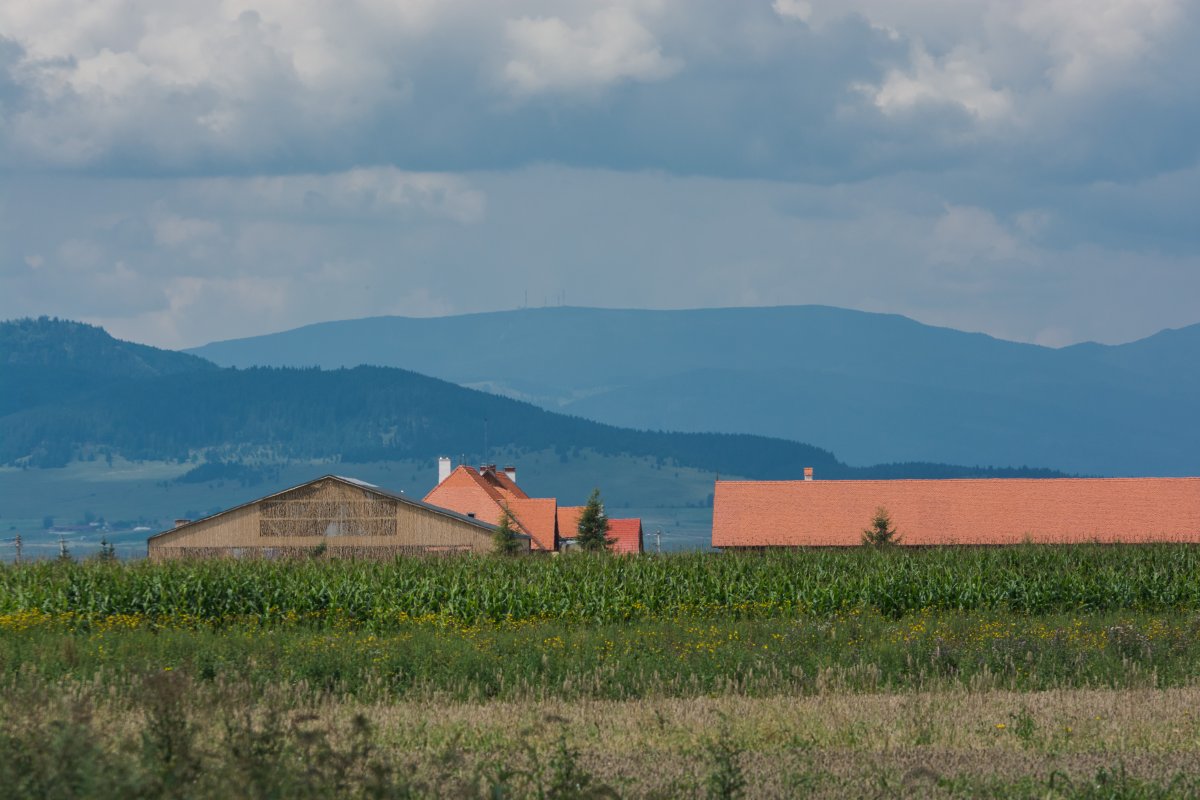
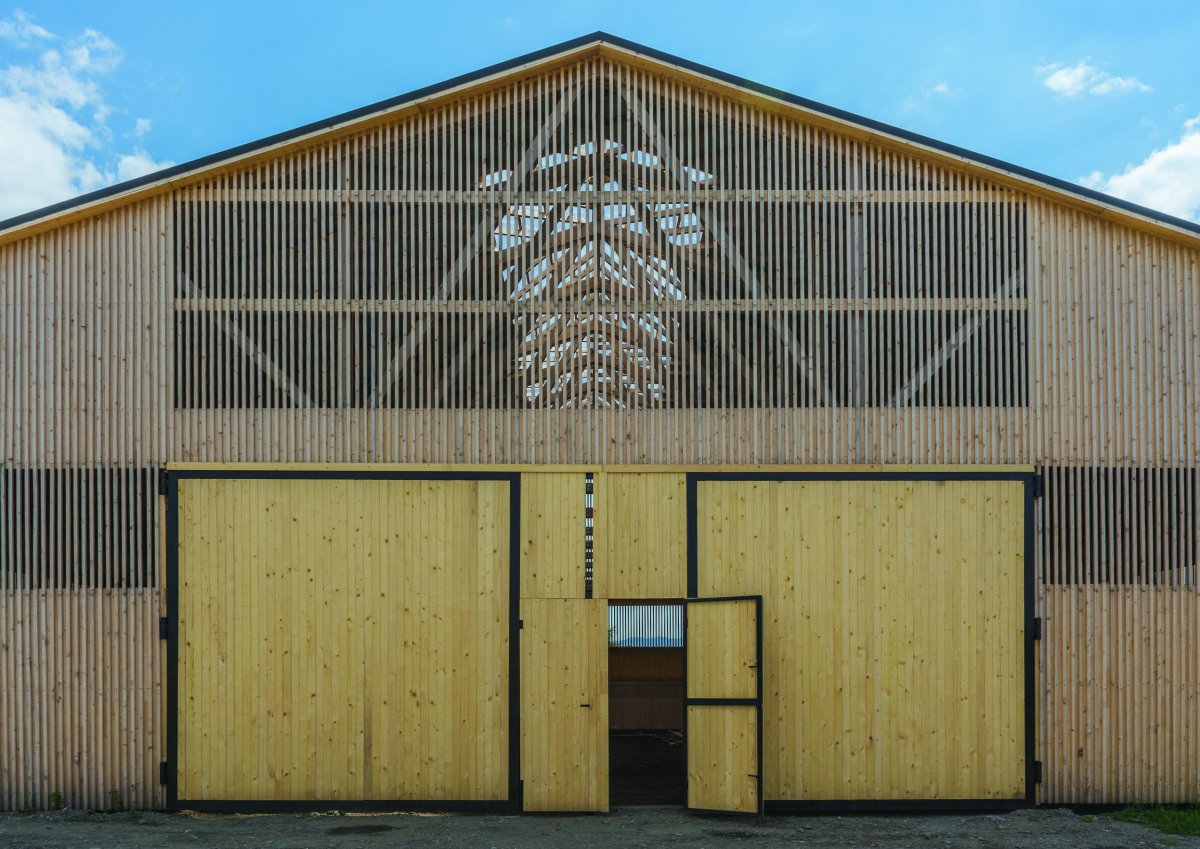
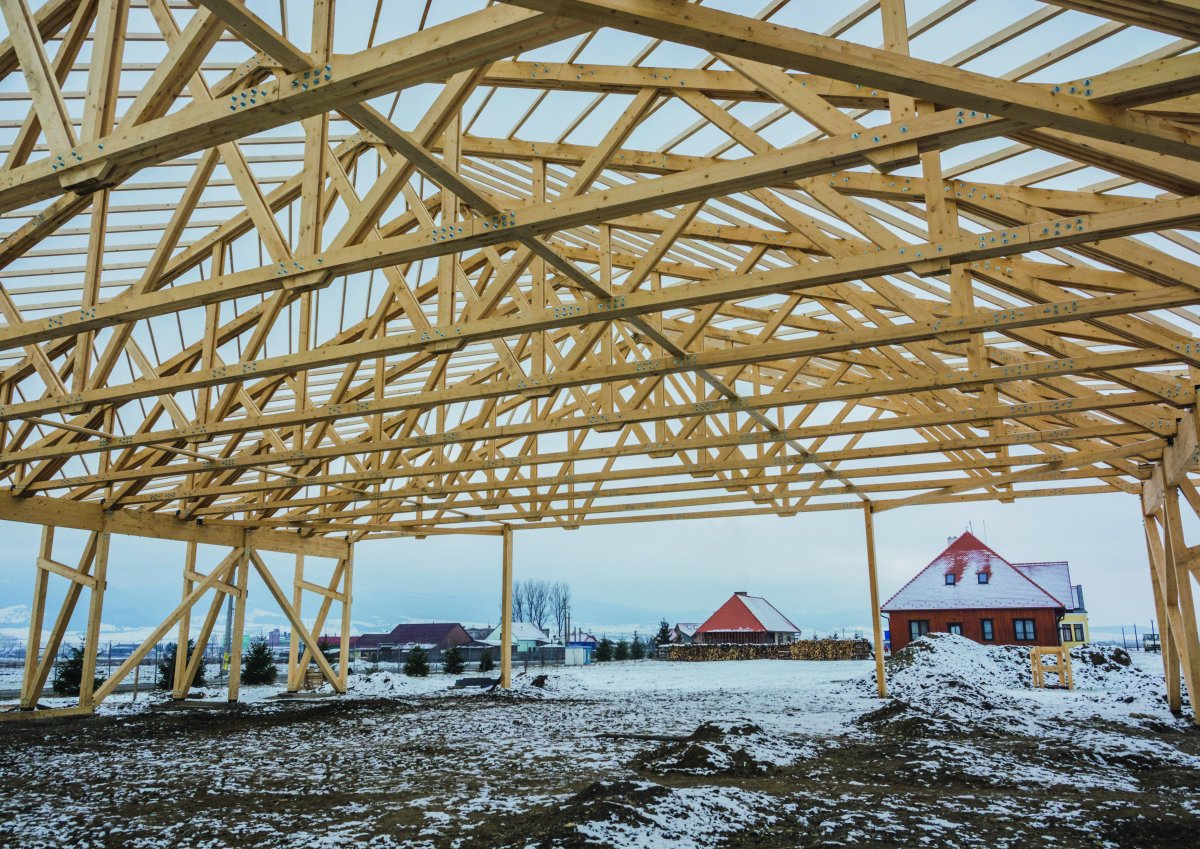
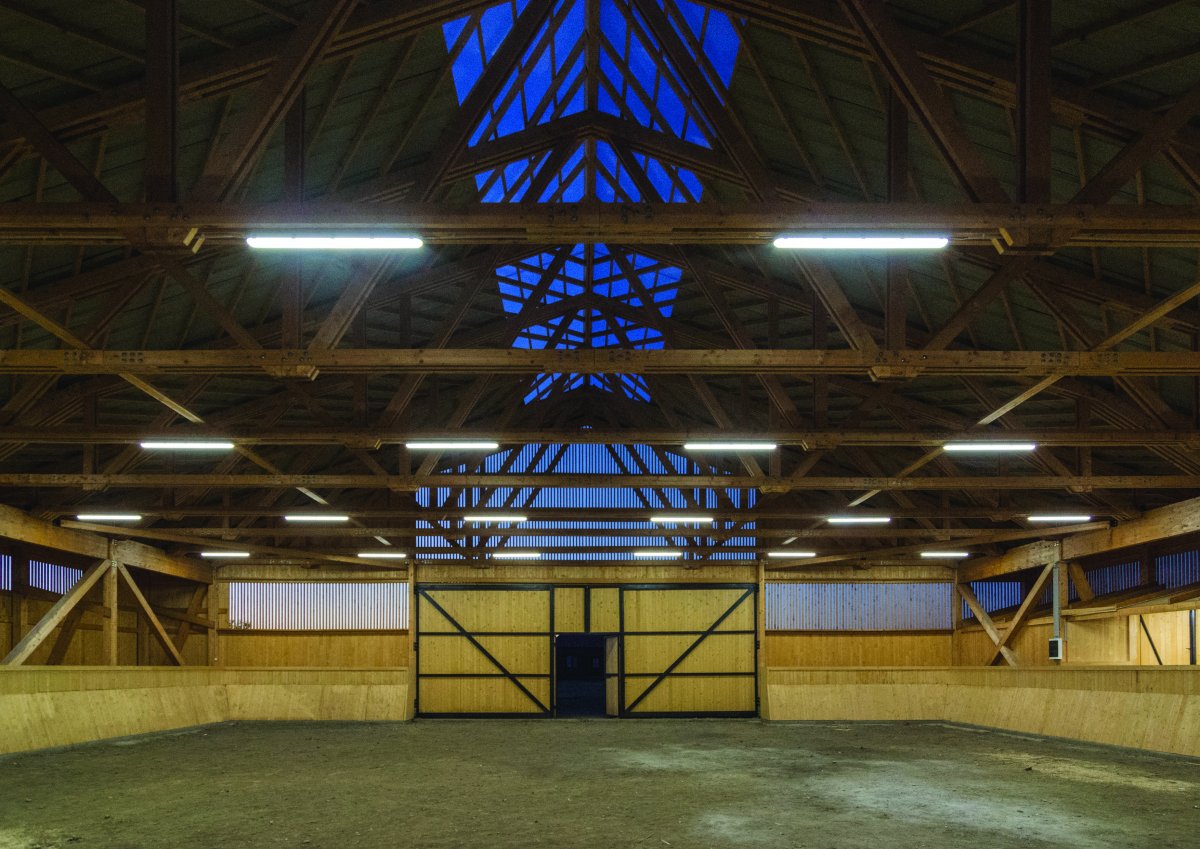
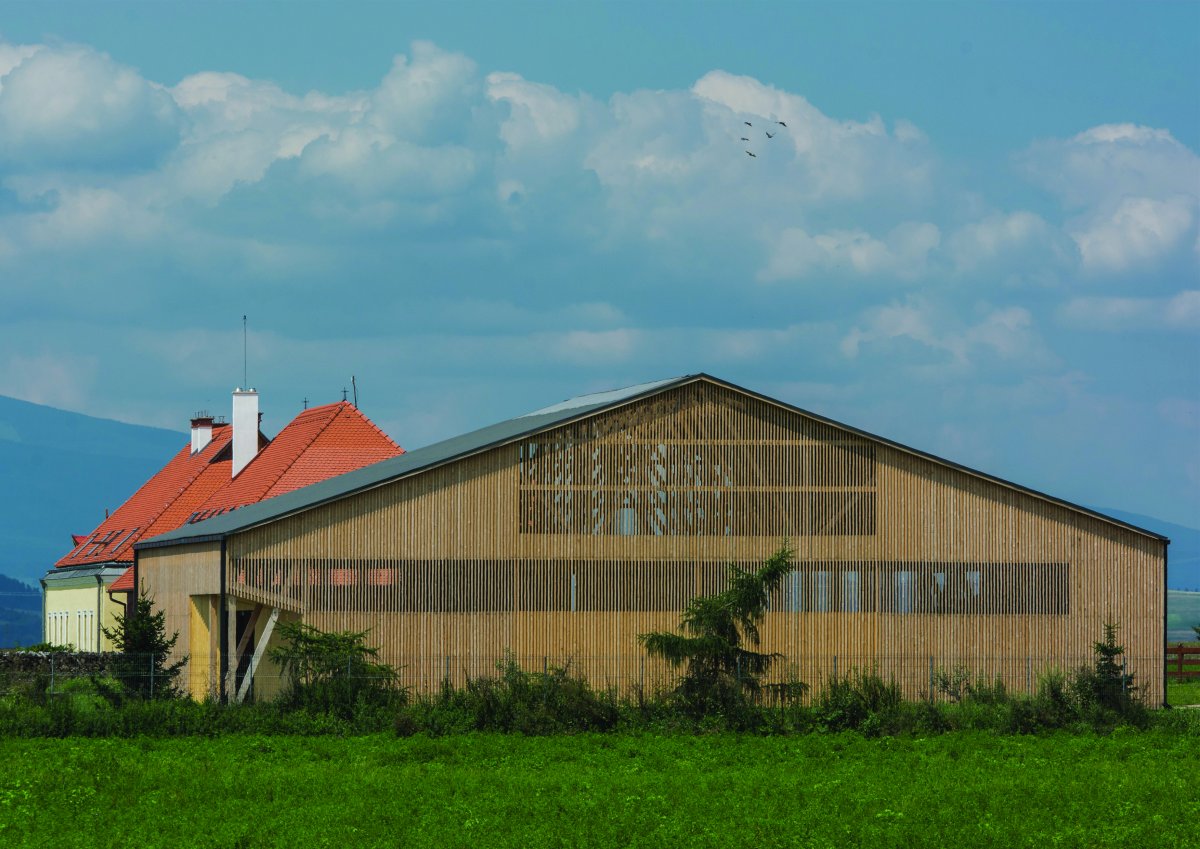
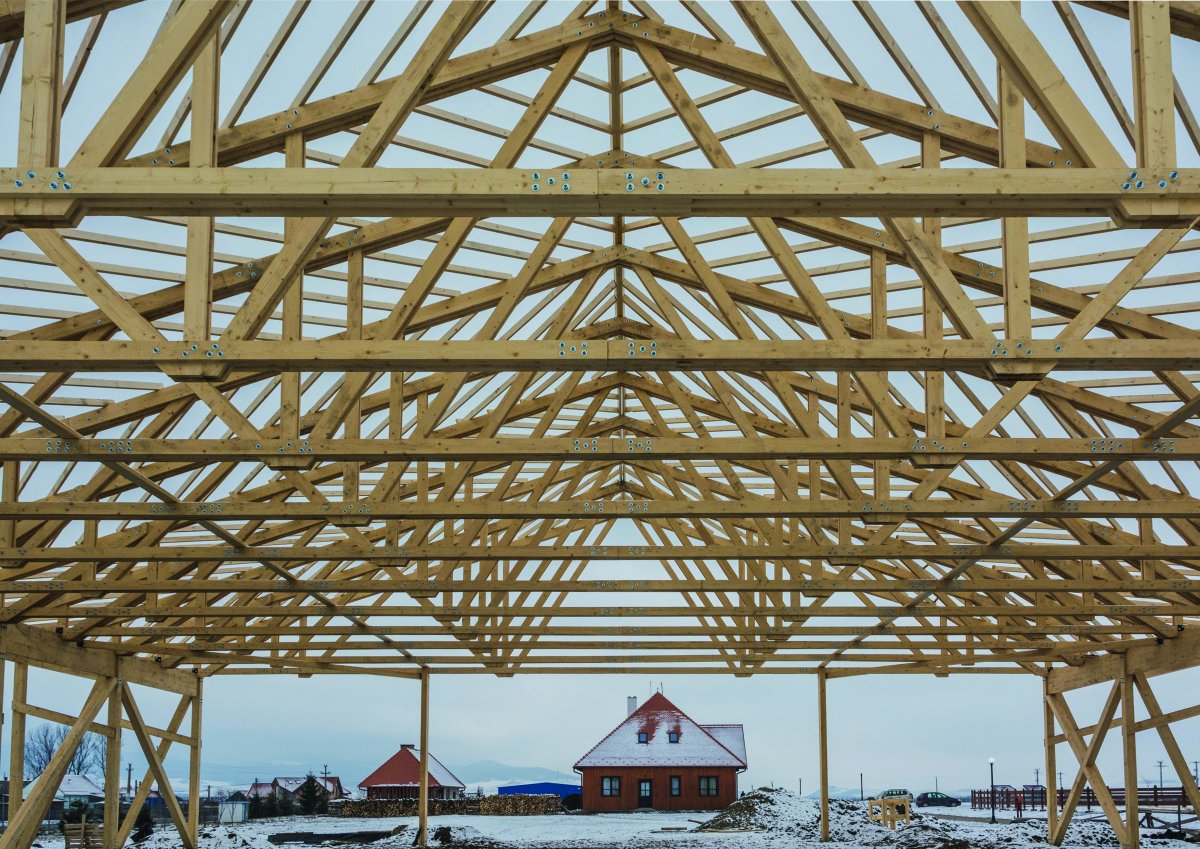
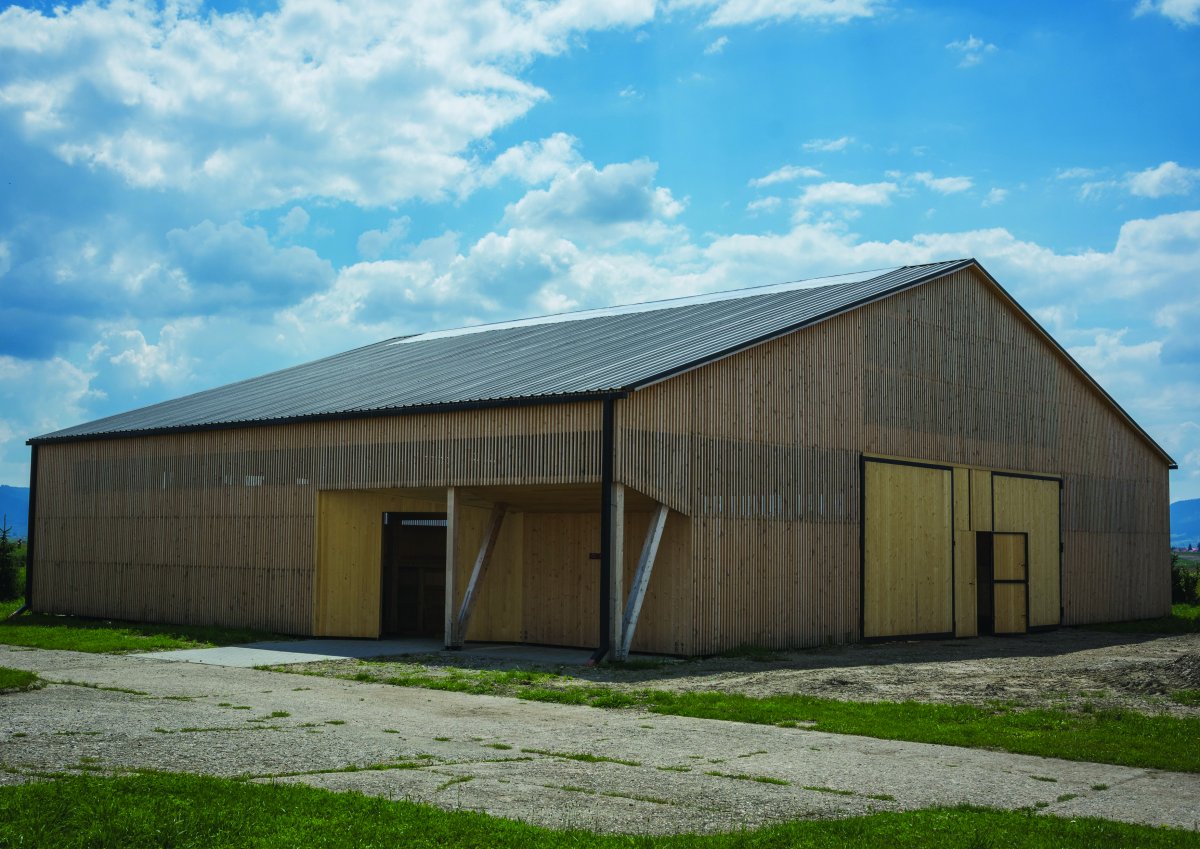
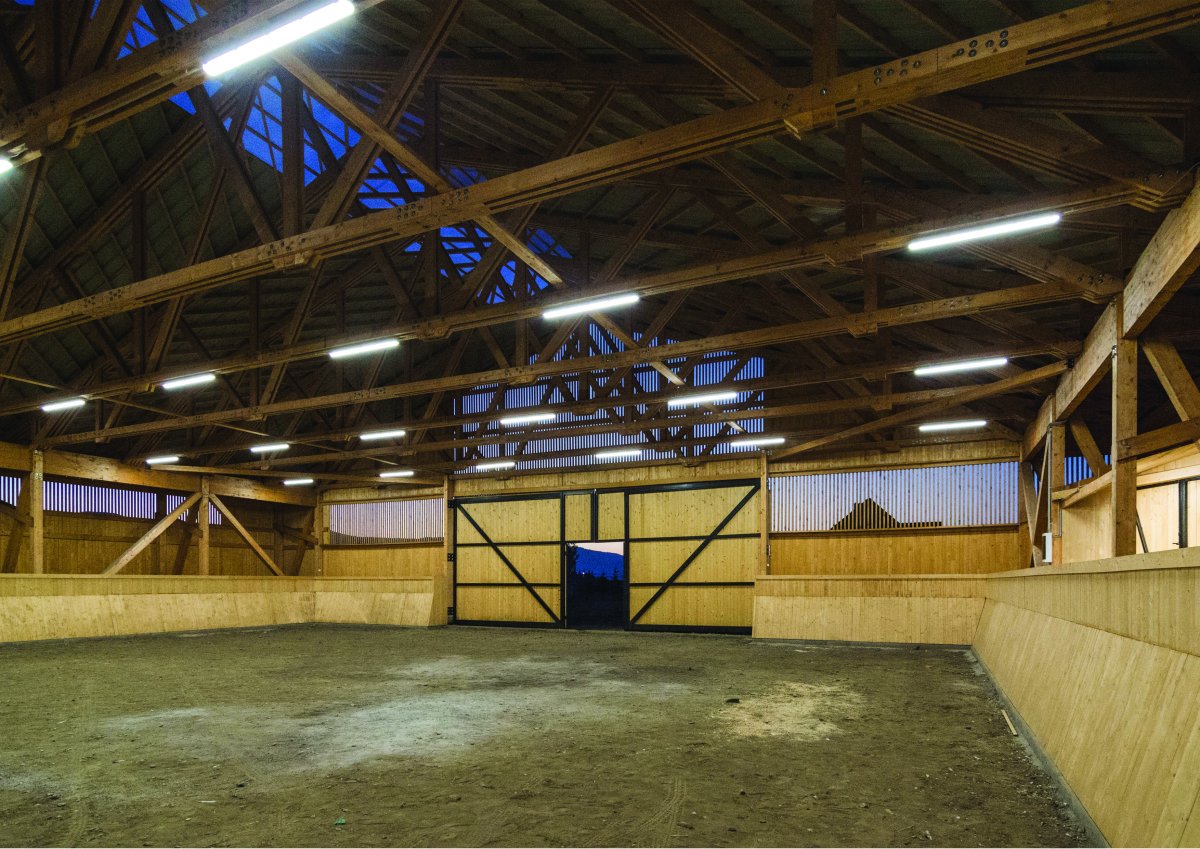
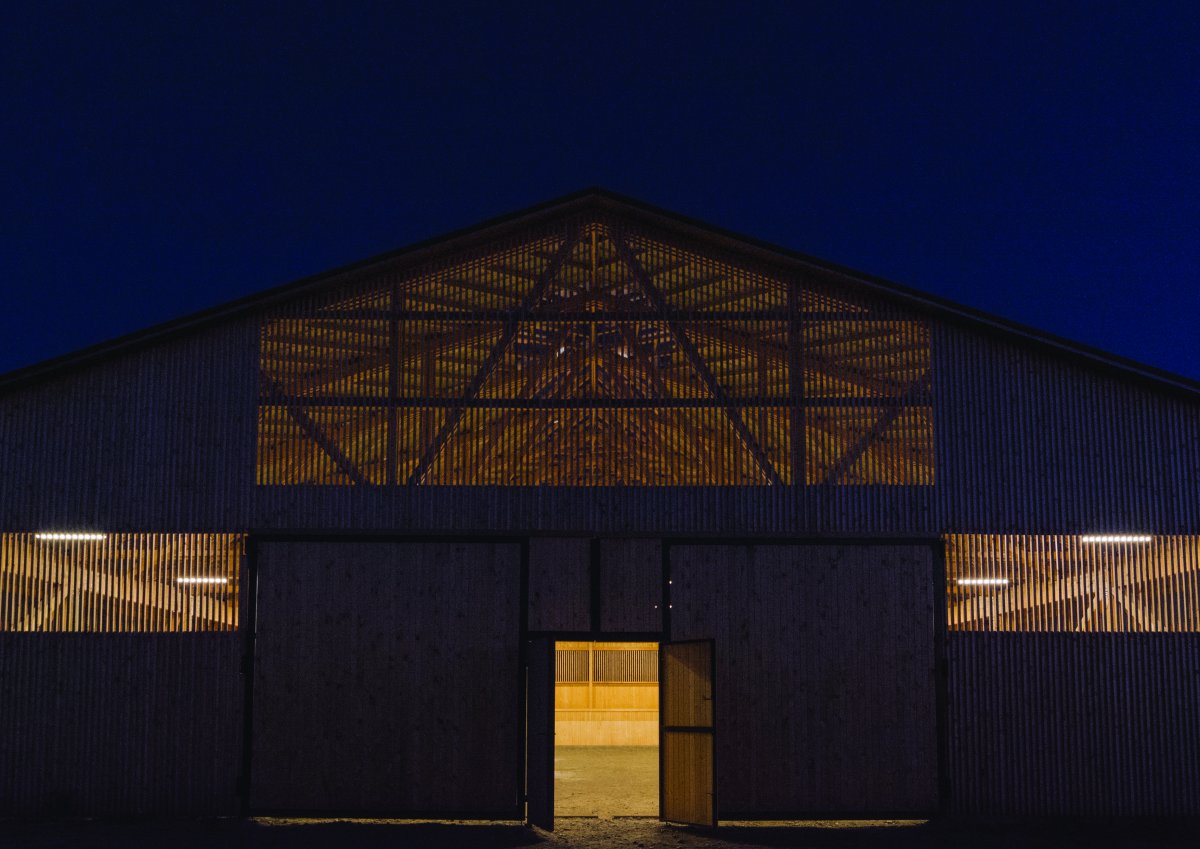
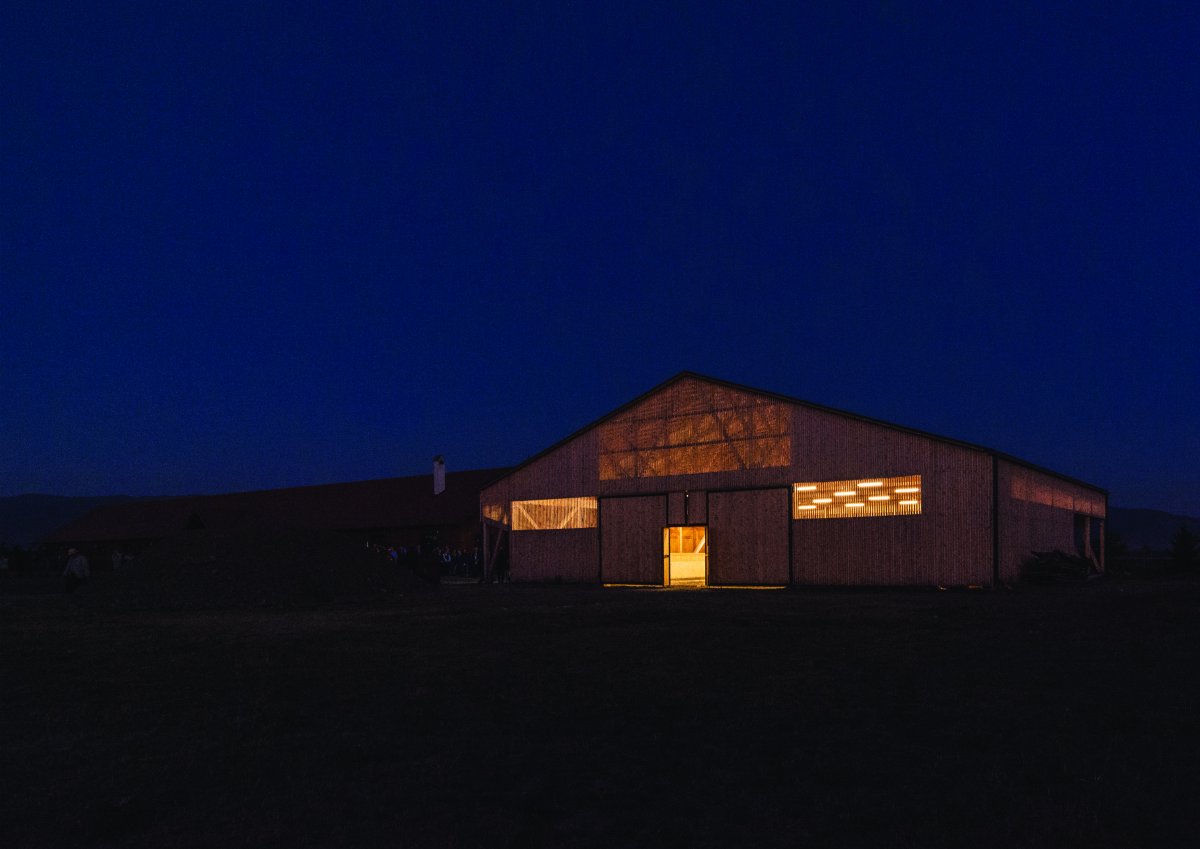
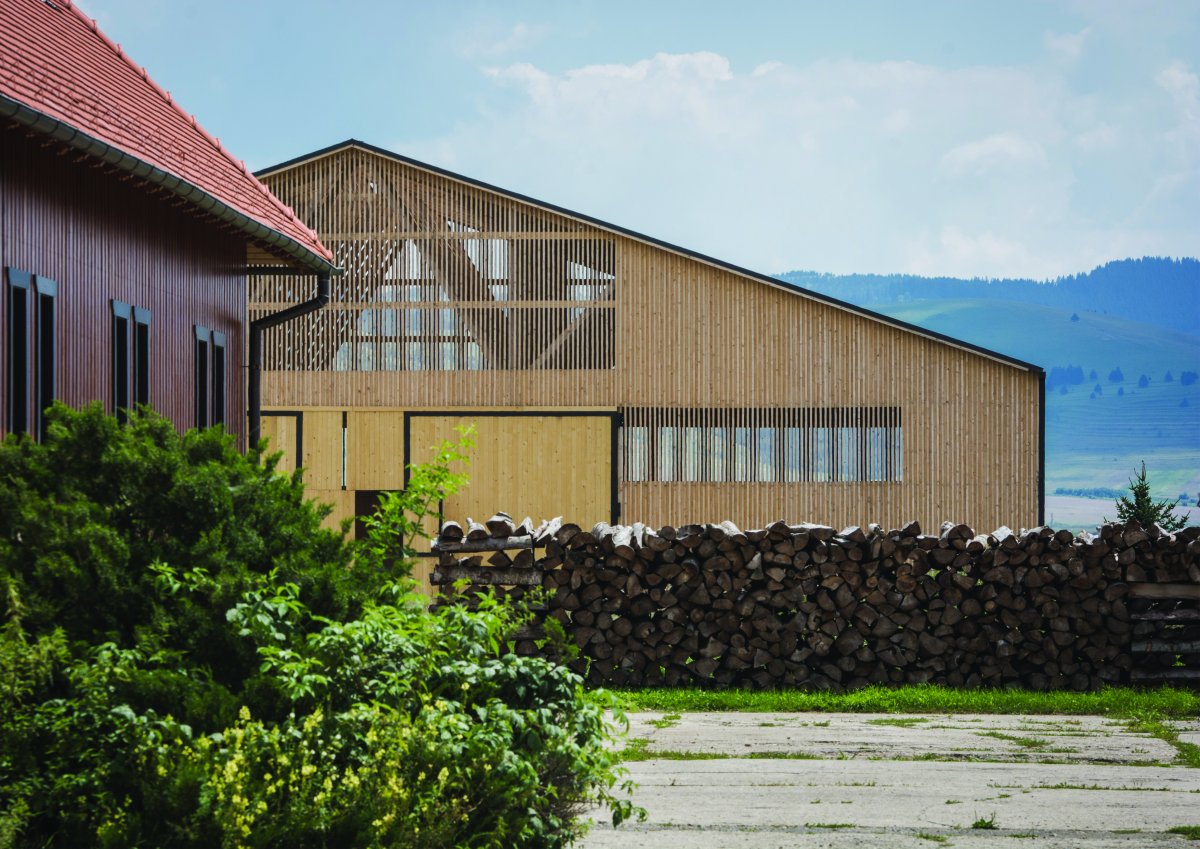
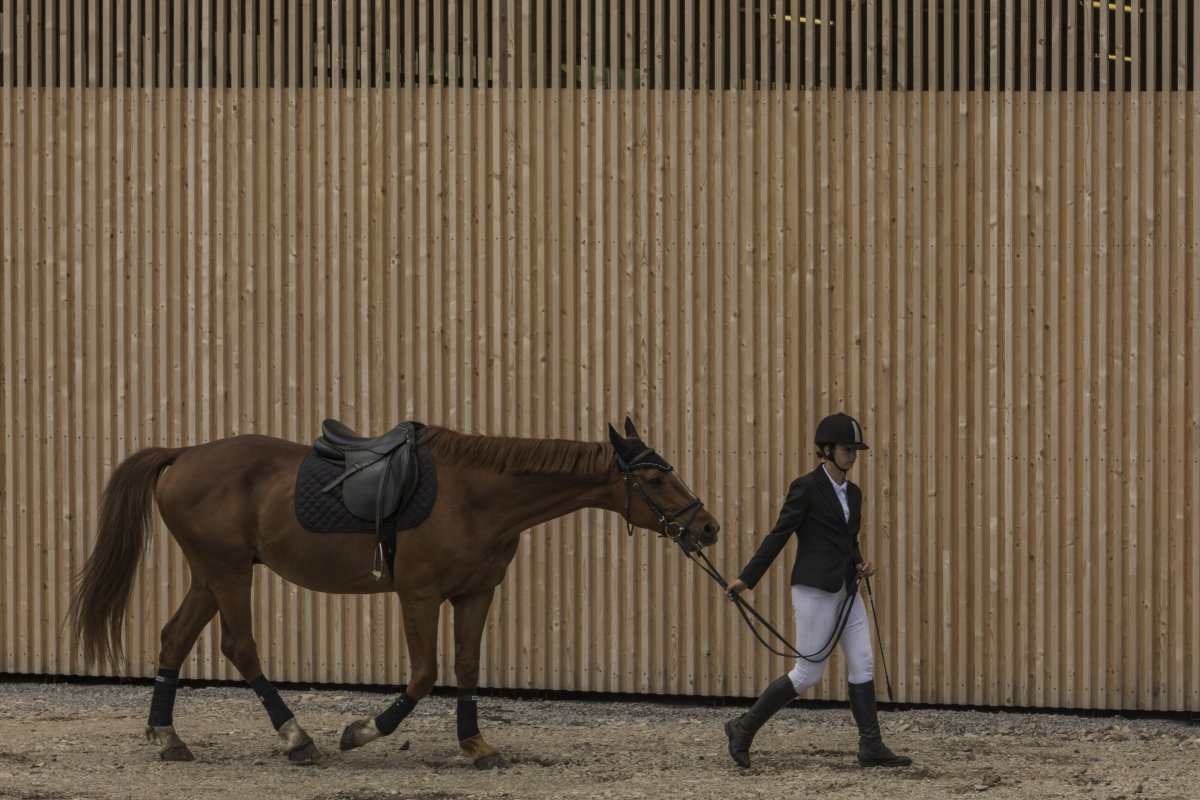
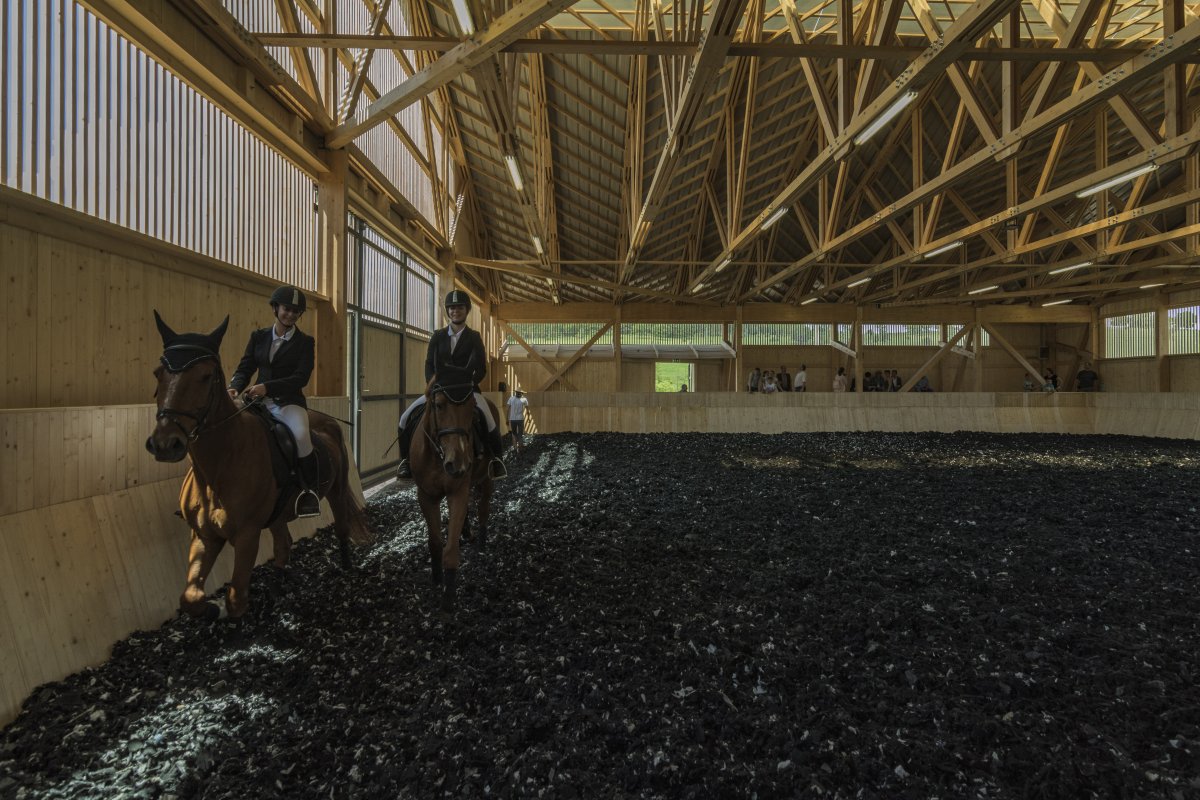
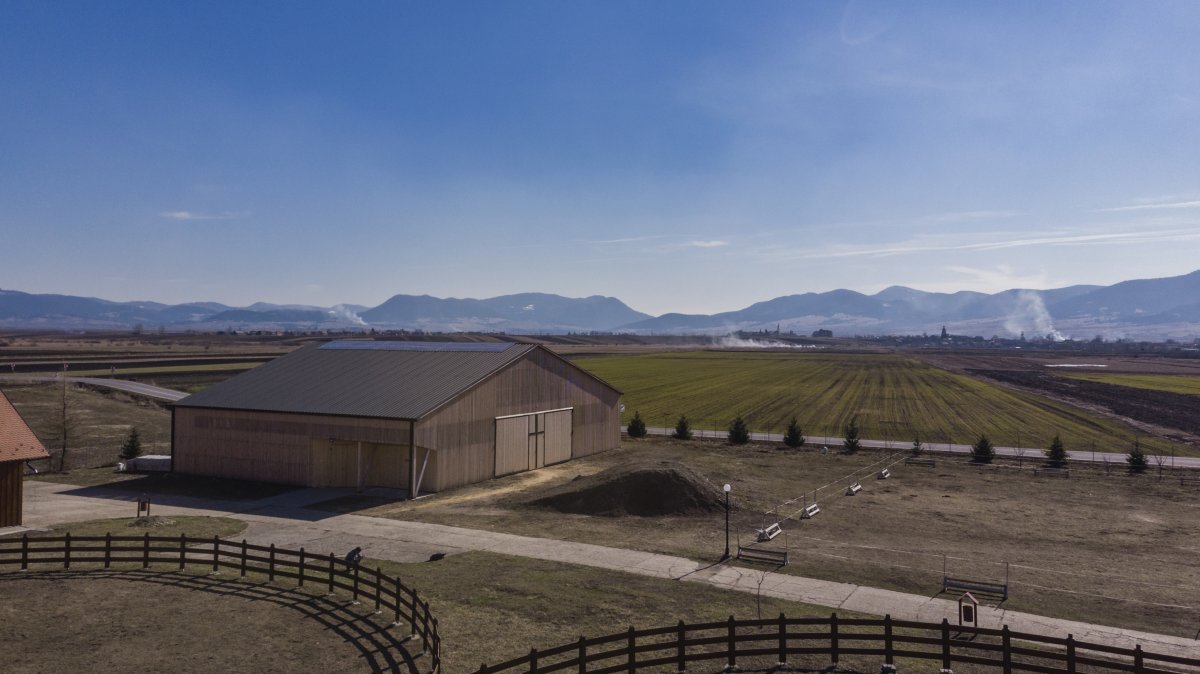
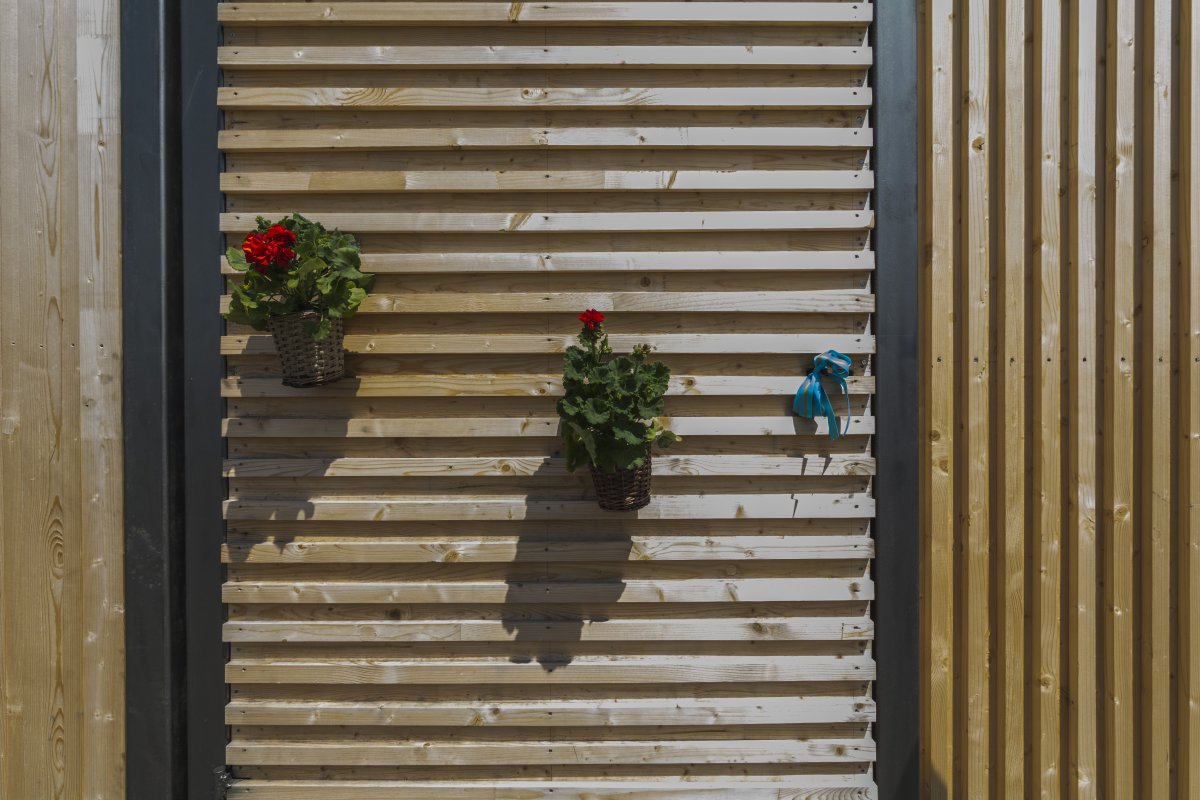
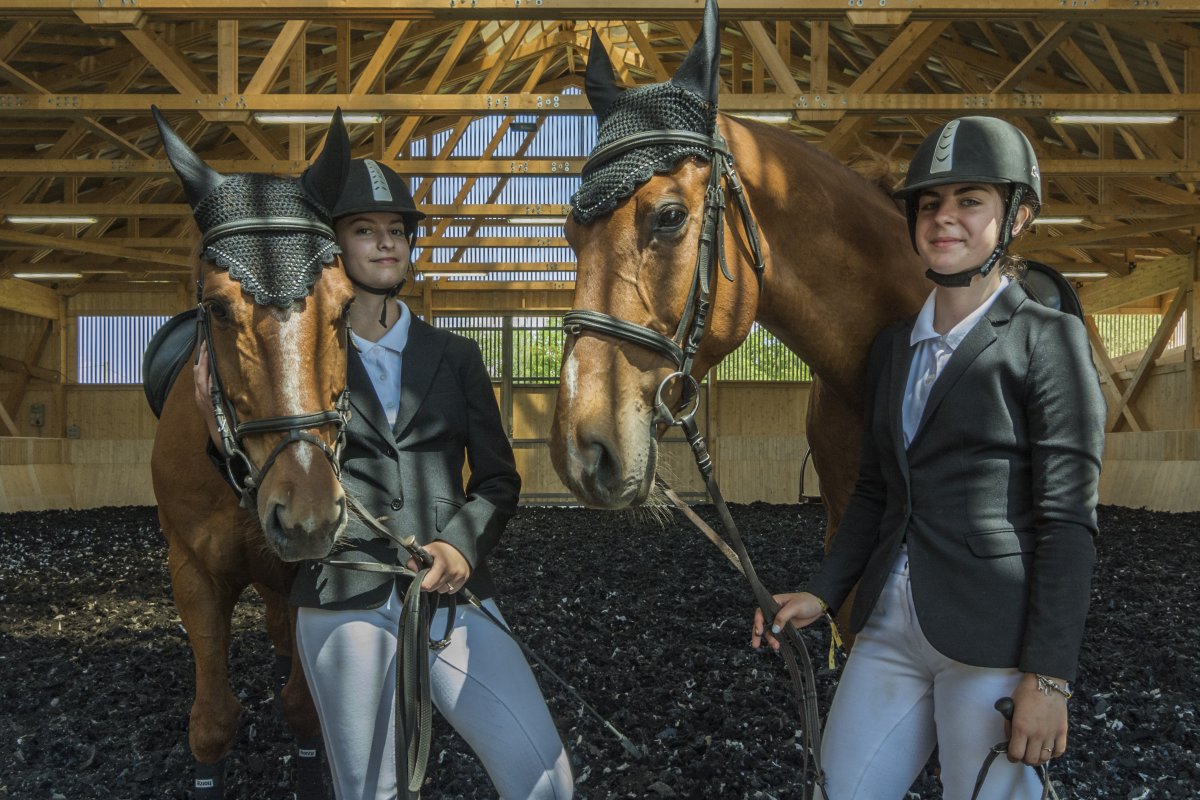
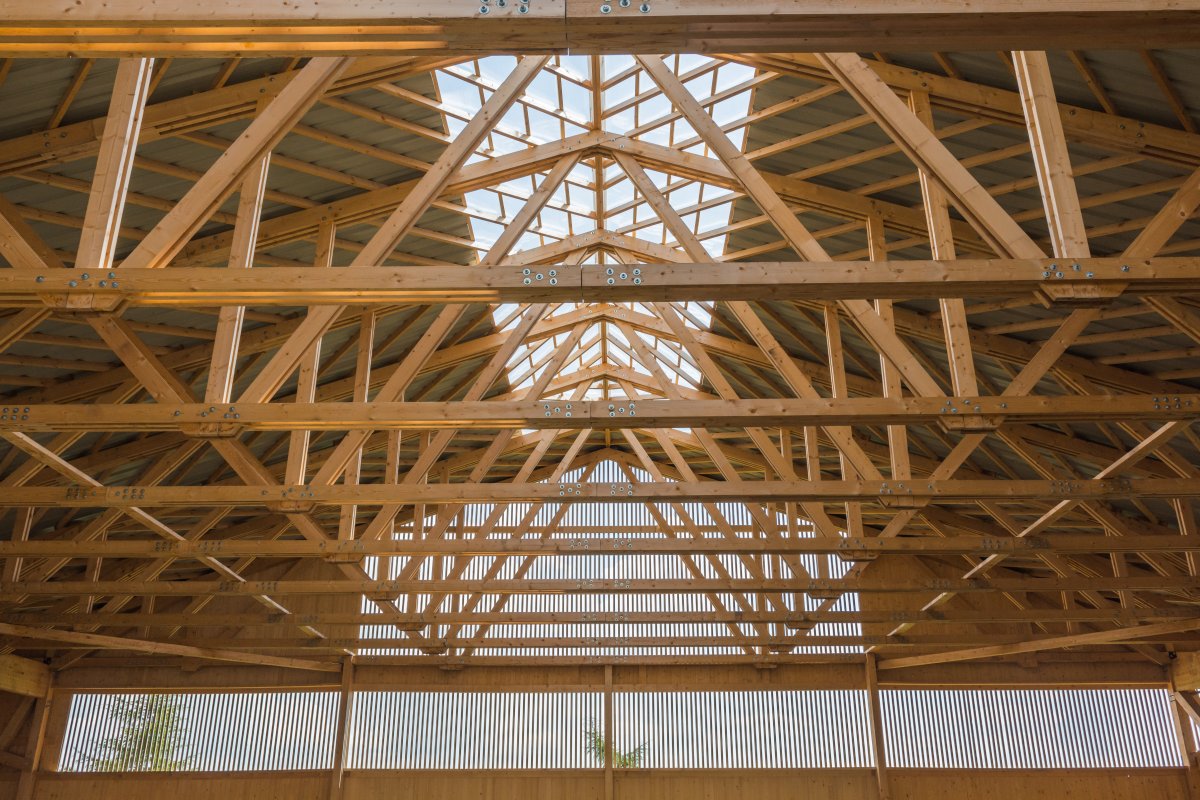
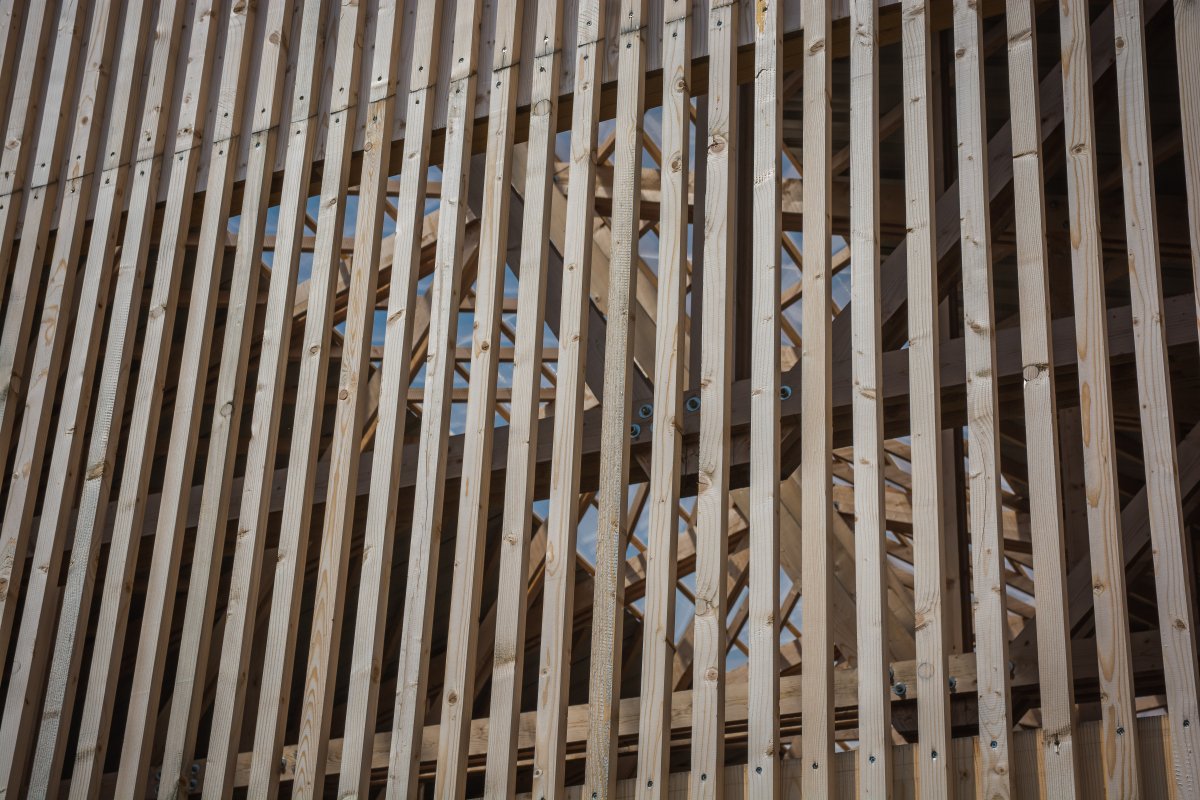
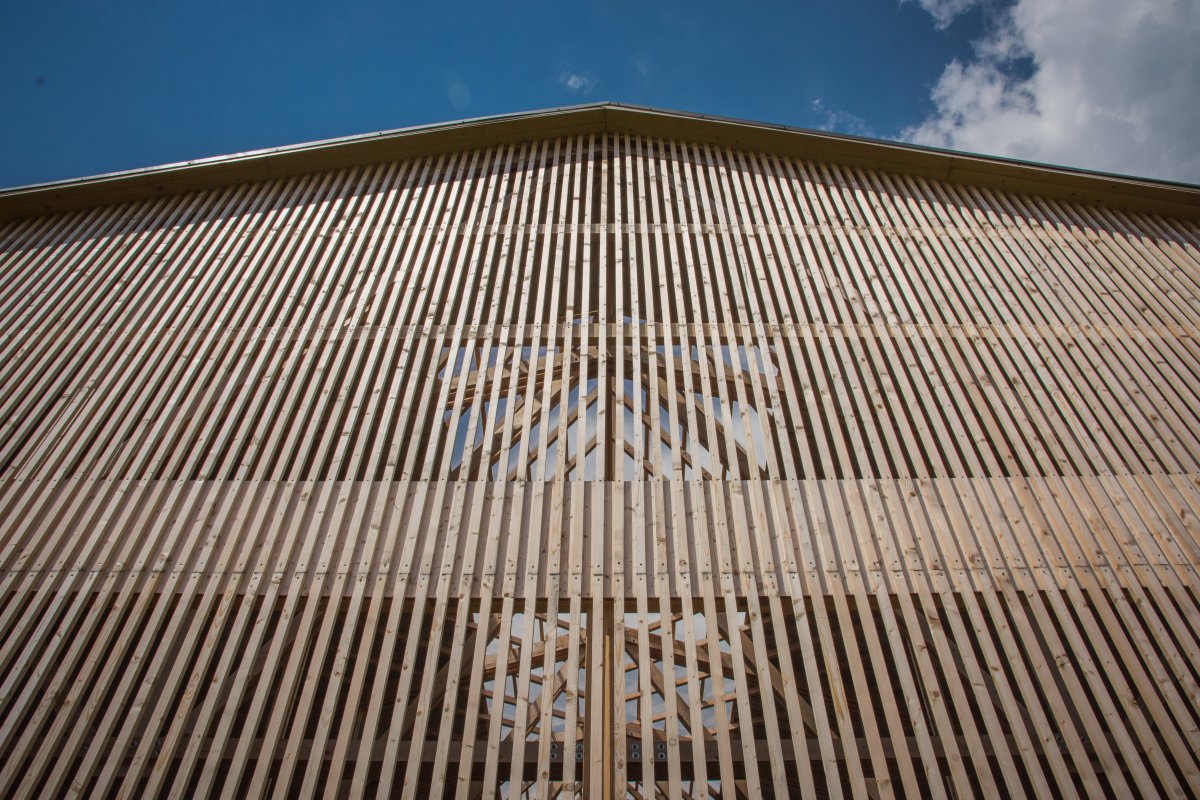
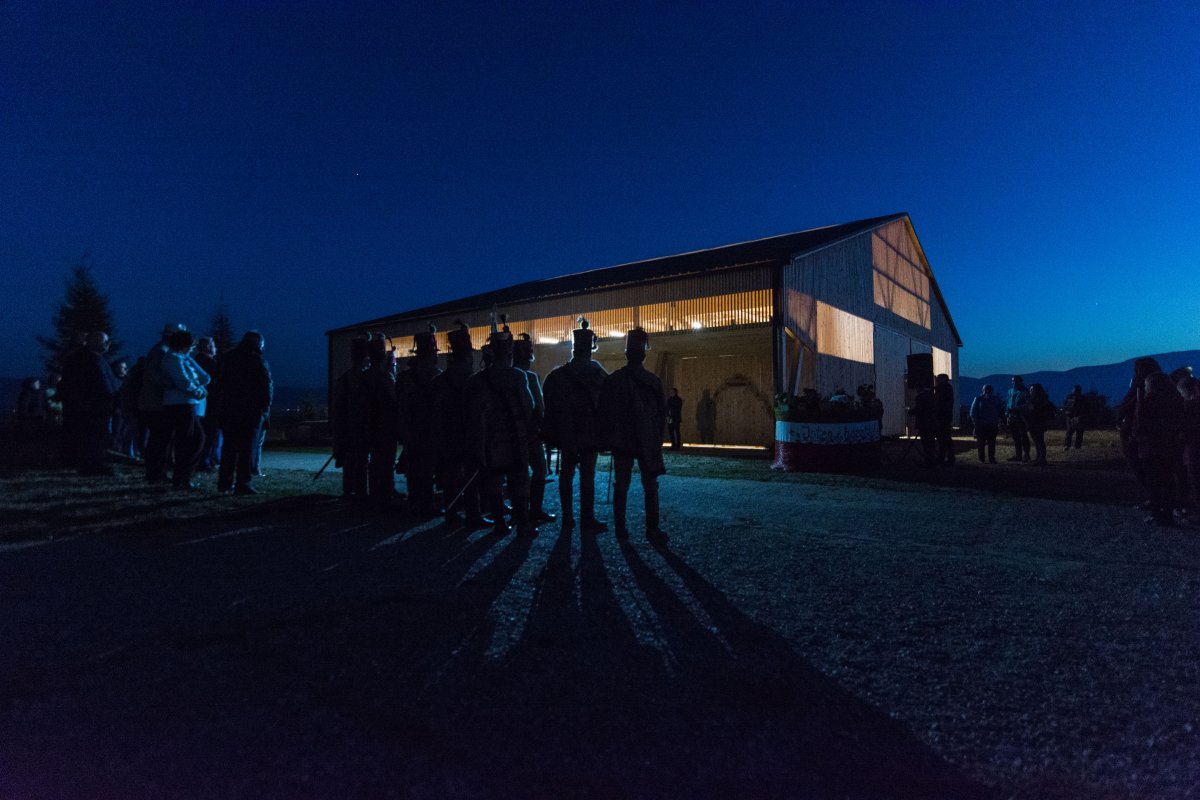
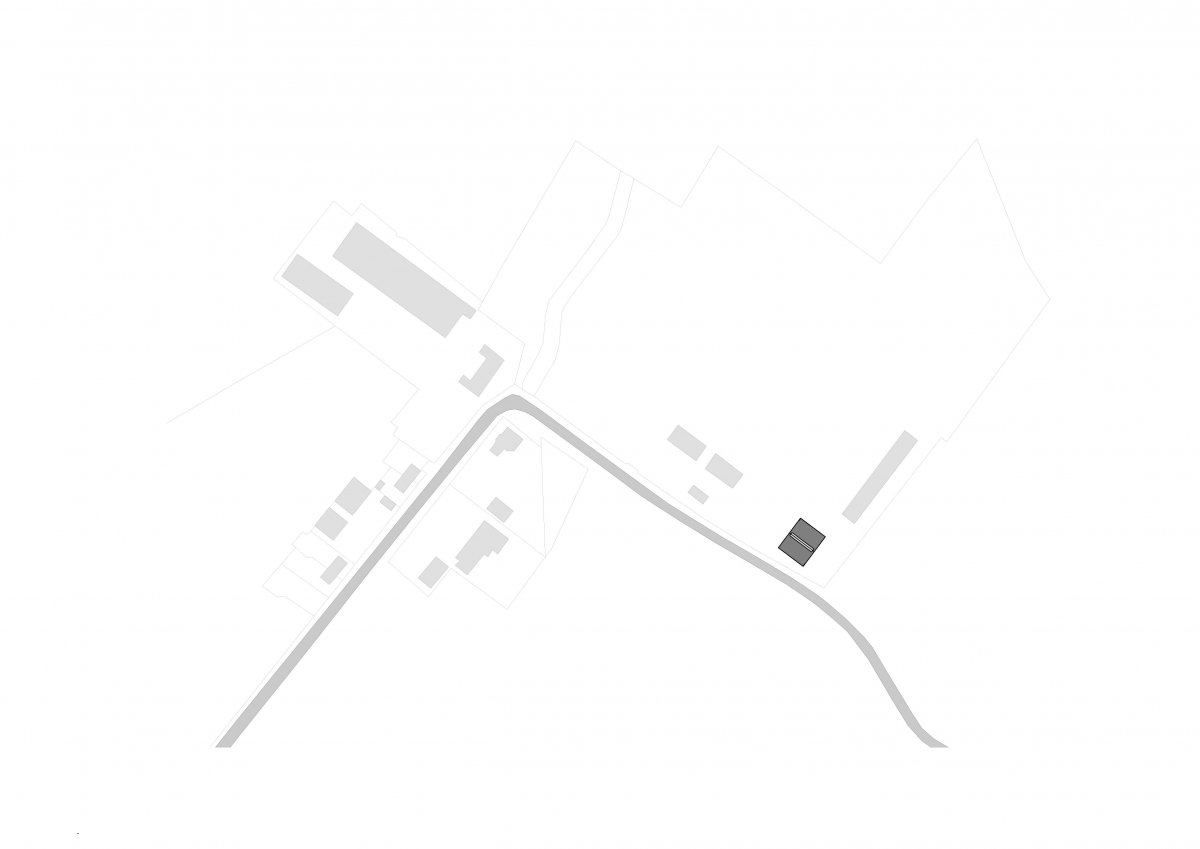
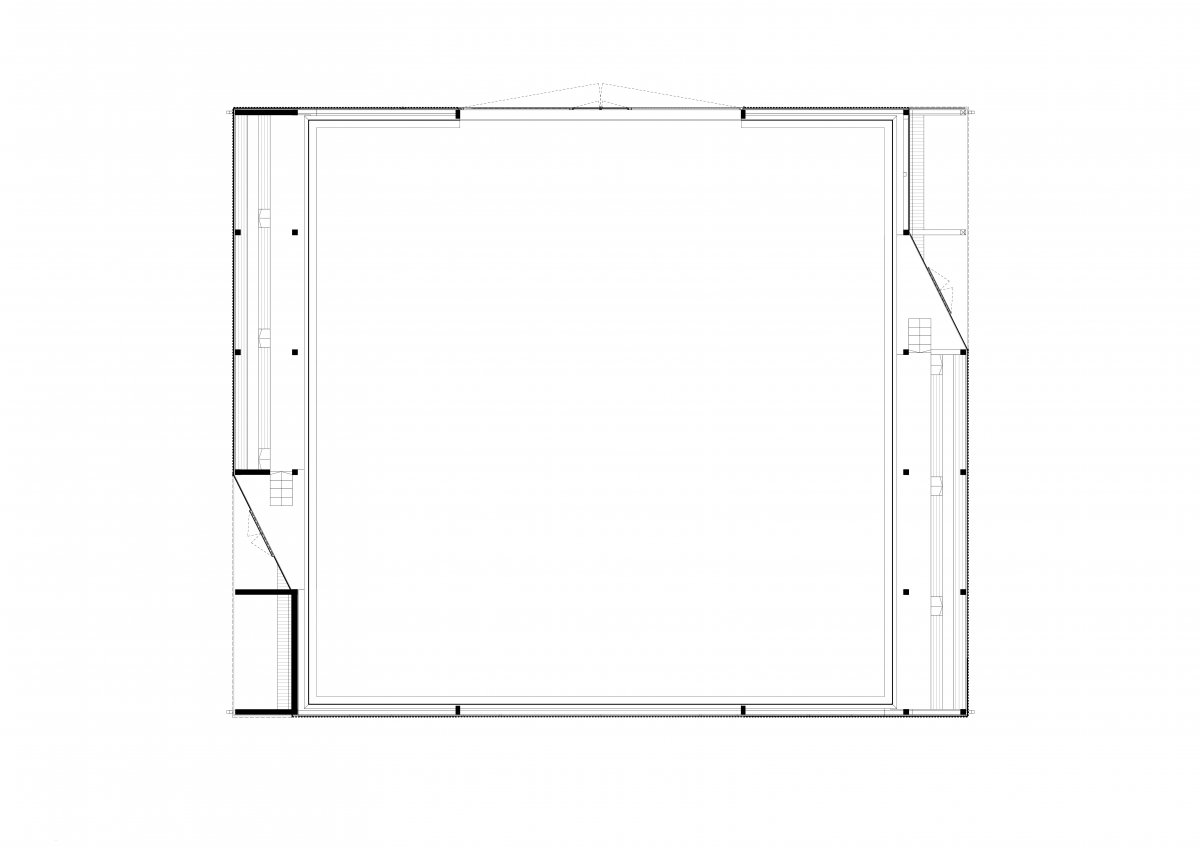
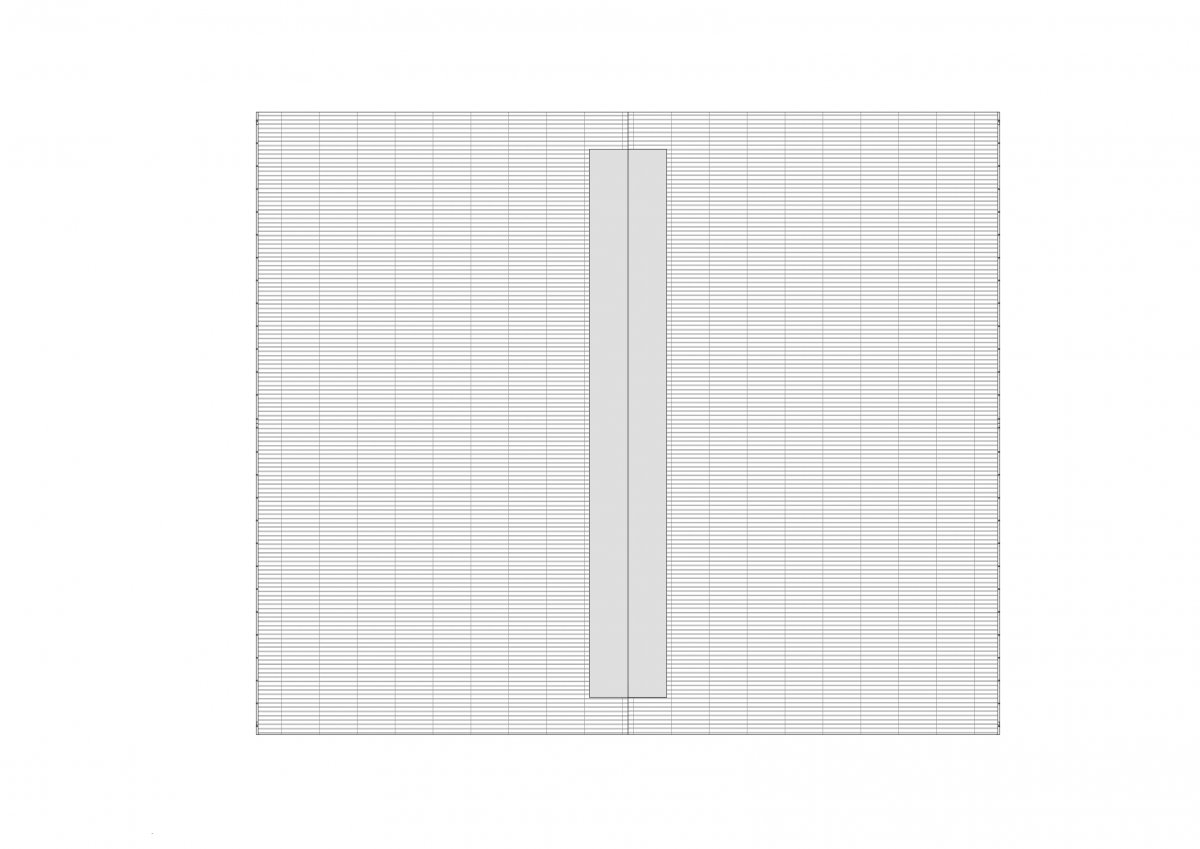
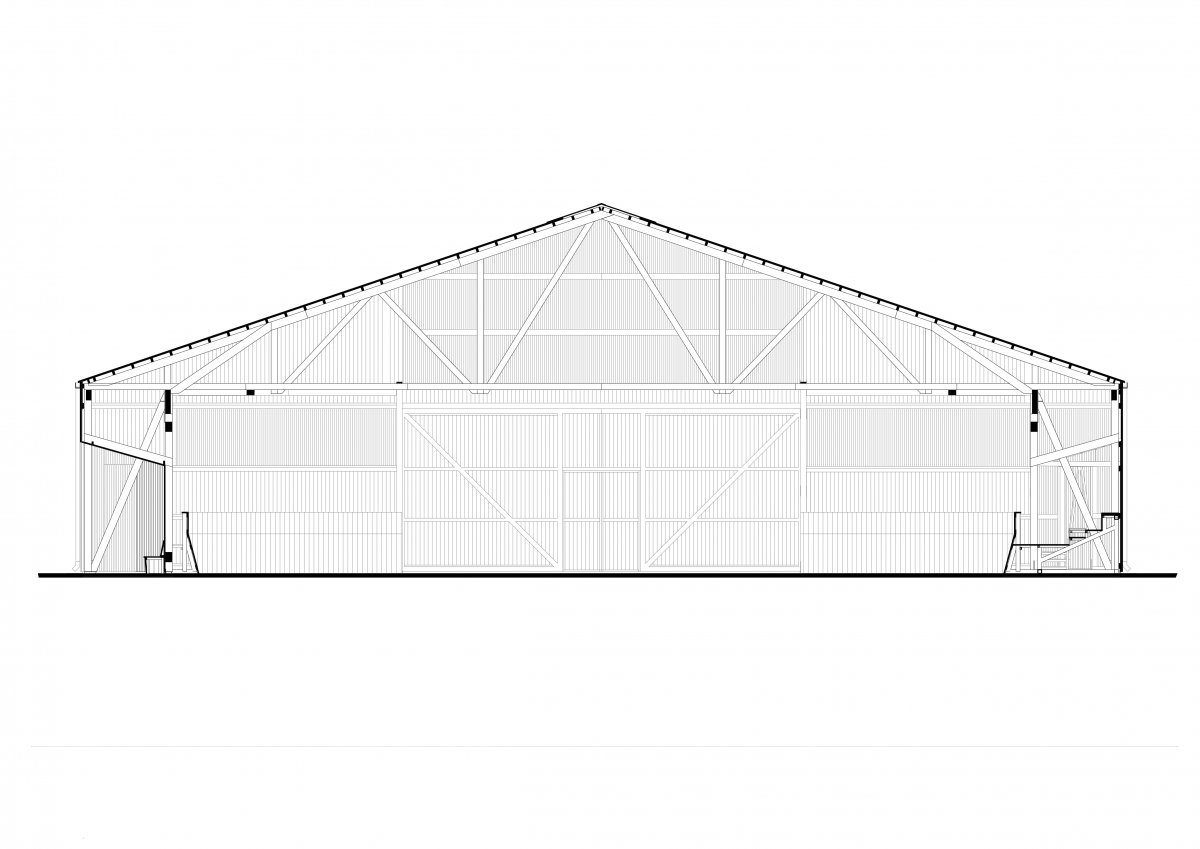
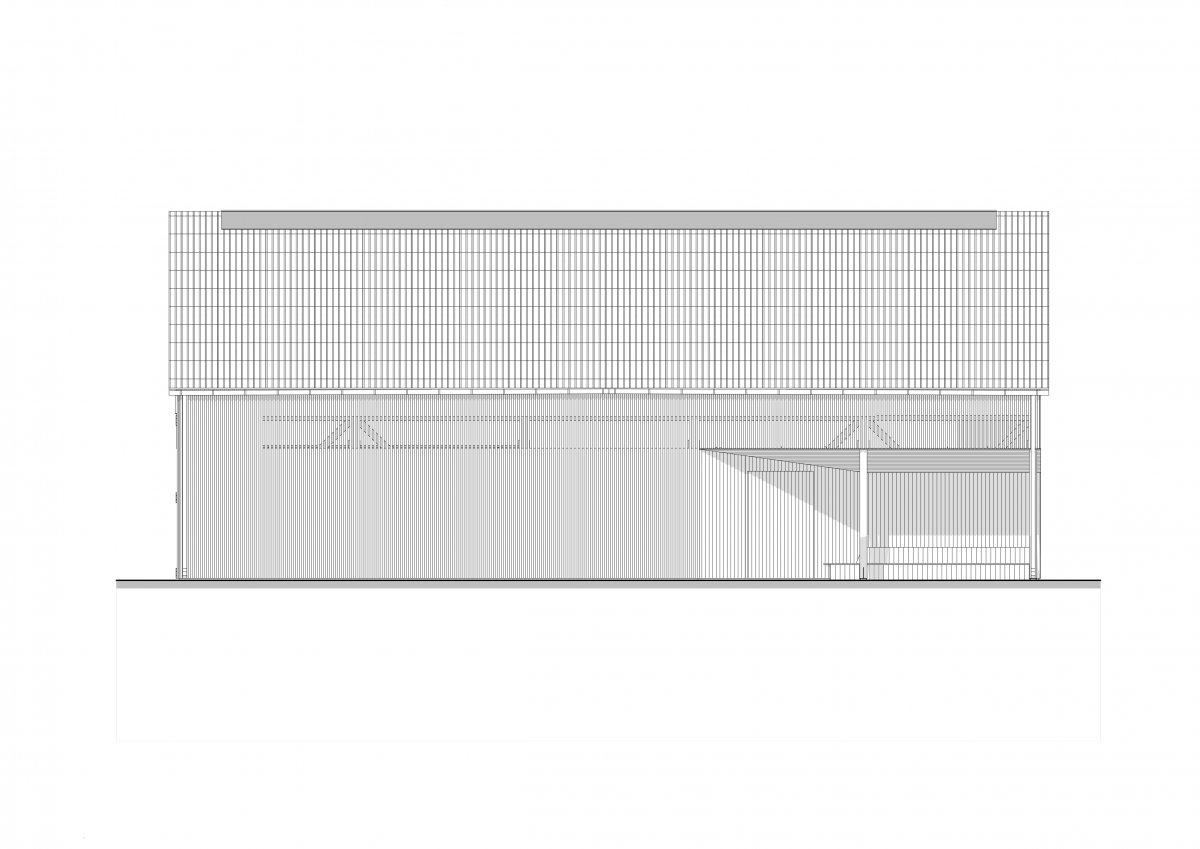
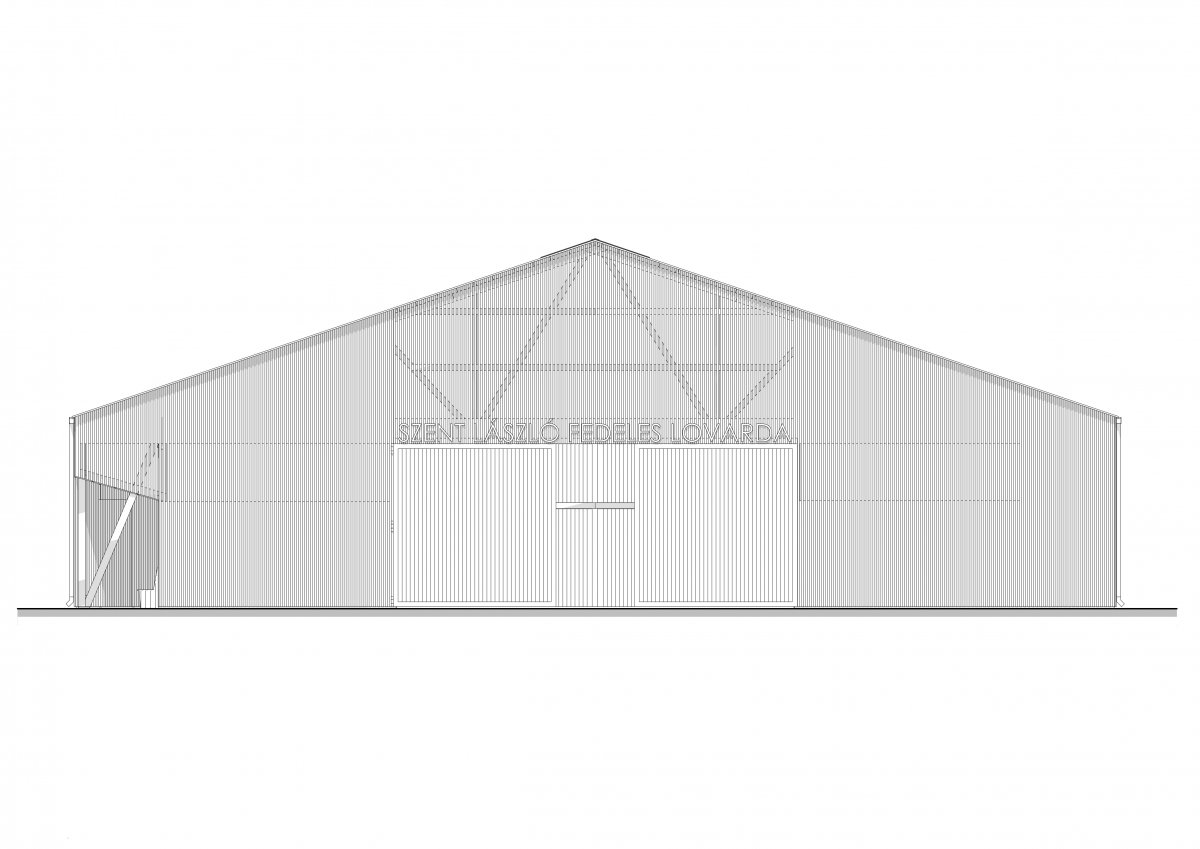

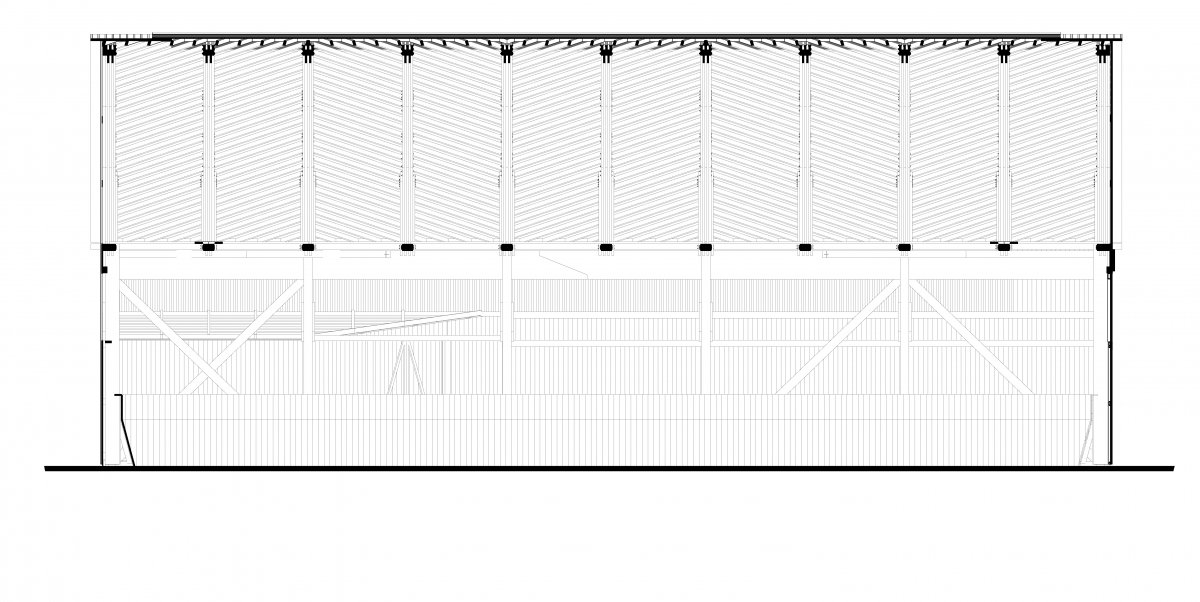
This is a low-budget „intermediate–tech”, a synthesis of the traditional local knowledge and industrial solutions. It can also be used for horse shows and as a community place for the village, as its design allows for easy extension. It has also proven to be a good prototype – its design has already been adapted for another place in the region. (Ștefan Ghenciulescu PhD)